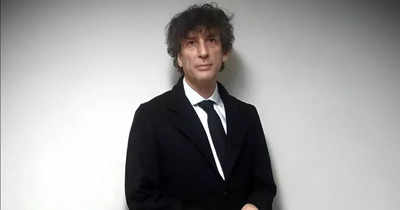
Neil Gaiman, the British author known for his works The Sandman and Coraline, is now facing serious allegations of sexual misconduct. As the spotlight intensifies, scrutiny has extended beyond his literary works to the formative years that shaped his career. Gaiman’s educational journey, which began at scholarship-funded schools and ended with his choice to skip university in favor of journalism, is as unconventional as the stories he tells. Read on to know how his academic path—and his decision to forego traditional higher education—shaped his creative trajectory and public image.
The Early Days: Scholarship and Literary Foundations
Born on November 10, 1960, in Portchester, Hampshire, Gaiman grew up in Sussex, a region steeped in pastoral beauty and stories of old. His formal education began at Ardingly College, a minor public school where he attended on a scholarship. Ardingly wasn’t Hogwarts, but for Gaiman, it was a place where classic literature became his first love. His days were filled with pages from Edgar Allan Poe and Mary Shelley—an early sign of the gothic worlds he would one day bring to life.
Whitgift School: The Place That Shaped a Storyteller
Gaiman’s journey continued at Whitgift School in Croydon, a school known for its rigorous academics and scenic campus. While other students may have focused on future professions in law or medicine, Gaiman was busy imagining worlds far beyond the classroom. It was here that his appetite for storytelling deepened. Instead of a romanticized image of youthful creativity, imagine a young Neil, head down during lessons, perhaps distracted but undoubtedly honing the habit of scribbling ideas that later fueled his literary ambitions.
The Unconventional Choice: Skipping University
After finishing at Whitgift, Gaiman made a decision that would set him apart: he skipped university entirely. Instead of pursuing a degree, he dove headfirst into journalism, contributing to British publications like The Sunday Times, The Observer, and Time Out. His early reporting work covered a wide range of topics, from celebrity profiles to human interest stories. According to Gaiman, journalism offered a crash course in real-world storytelling.
In interviews, he’s often credited his journalism career with sharpening essential writing skills. Fact-checking, asking tough questions, and turning in polished work on deadline taught him discipline and brevity. While some see skipping university as a missed opportunity, for Gaiman, it became the defining twist in his origin story.
Foray into Publishing: Duran Duran and Hitchhiker’s Fans
In 1984, Gaiman’s first published book wasn’t about fantastical beings or parallel dimensions—it was a biography of the ’80s pop band Duran Duran. It’s hard to reconcile the man who created The Sandman with a chronicler of pop culture fluff, but this gig put him on the publishing map. Not long after, Gaiman wrote Don’t Panic: The Official Hitchhiker’s Guide to the Galaxy Companion, a witty nod to the late Douglas Adam.
Off The Beaten Track
Today, as Gaiman faces mounting allegations, the story of his rise to literary stardom feels more complex. His nontraditional educational path is often lauded as proof that formal degrees aren’t the only route to success. Yet, recent events have raised deeper questions about the intersection of creative genius, power, and accountability.
While Whitgift and Ardingly may have nurtured his love of stories, Gaiman’s legacy is now entwined with real-life narratives that aren’t so easily resolved. The debate over whether the art can be separated from the artist rages on, and Gaiman’s place in literary history remains a conversation filled with both admiration and unease.

 3 months ago
95
3 months ago
95




























 English (US)
English (US)